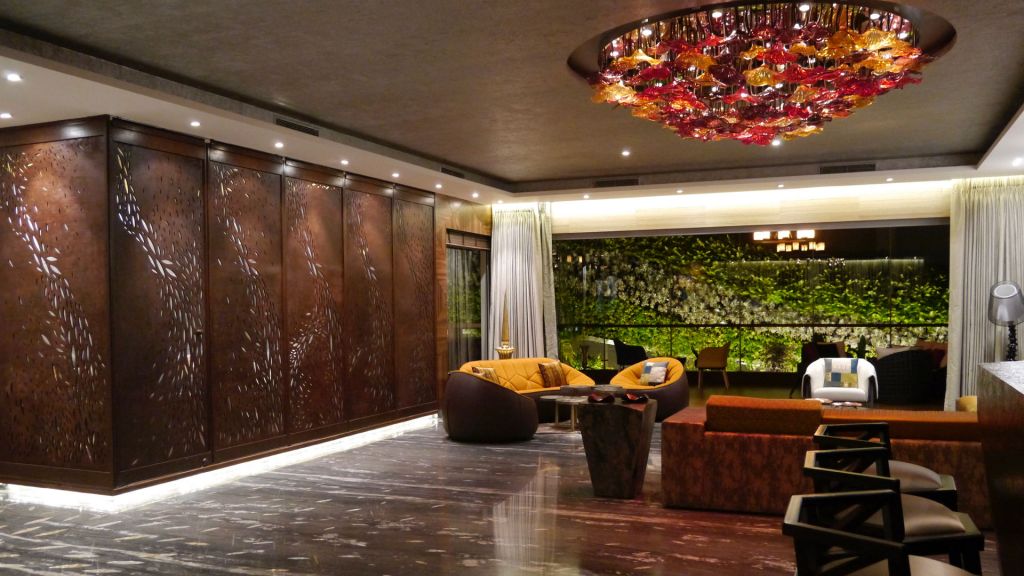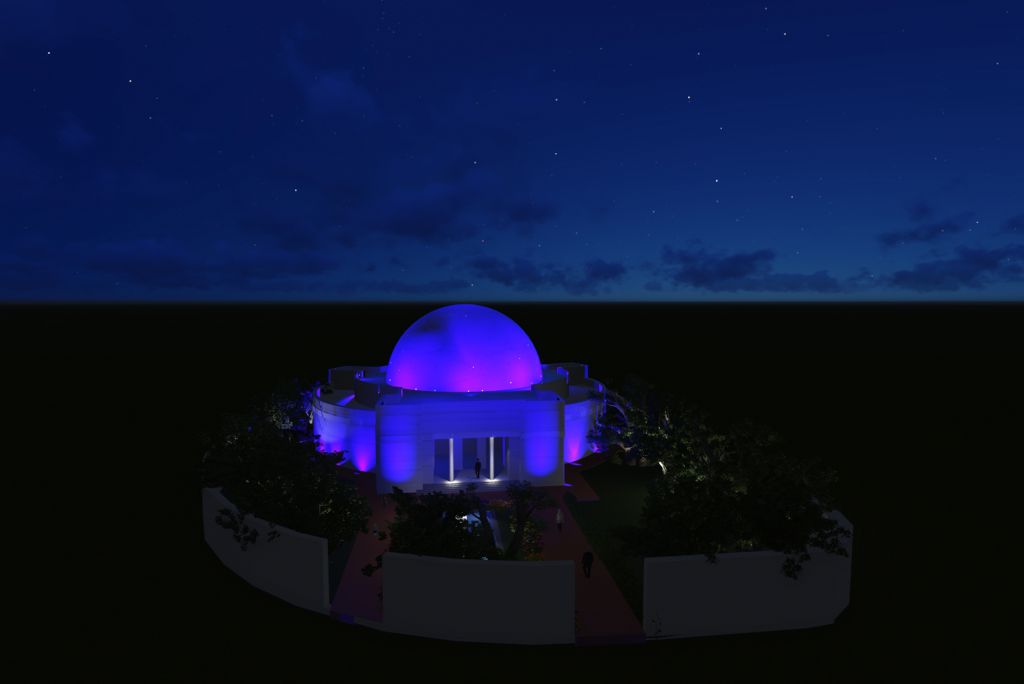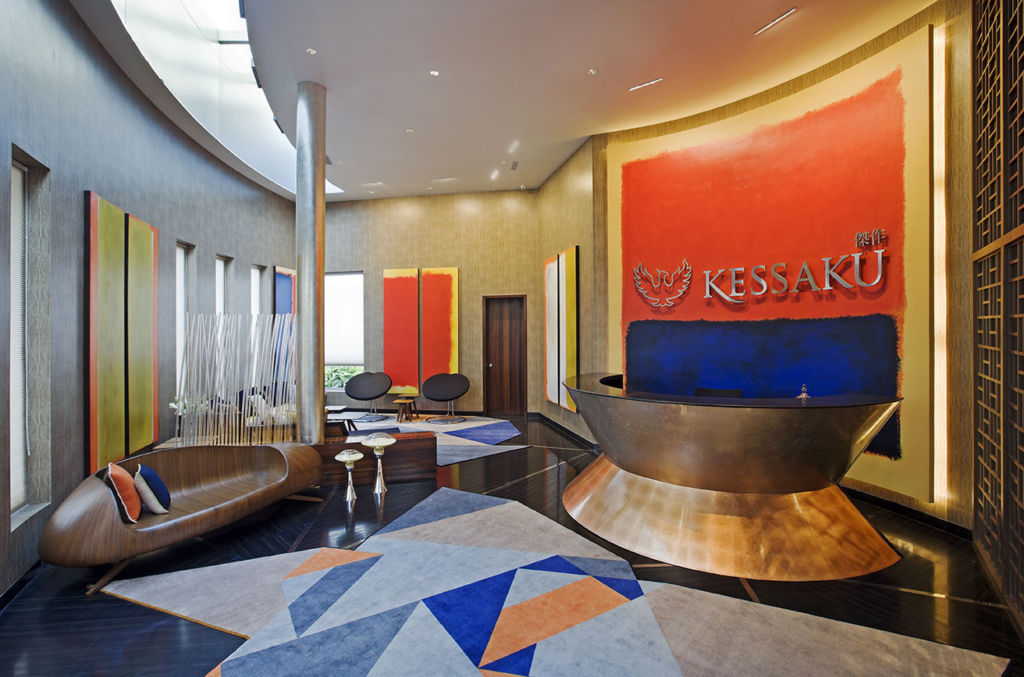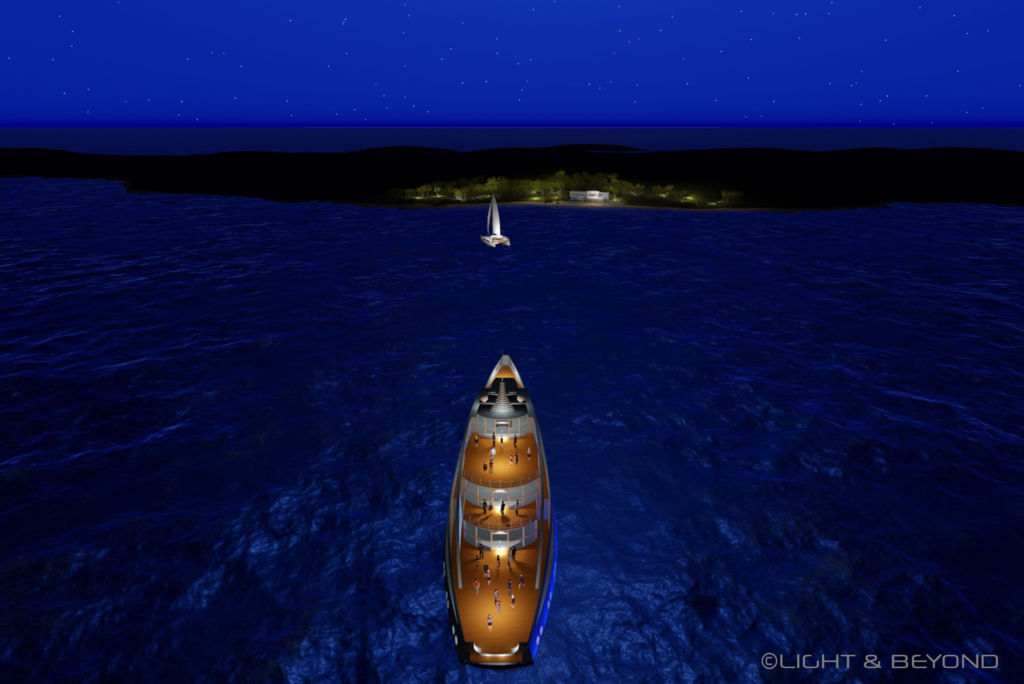The Telegraph – T2 Travelling Light
At Lighting Design Awards 2018 in London in May, in the 40under40 category, one name stood out — Tejas Doshi, the man behind Light & Beyond, one of India’s leading lighting consulting firm, which he founded in 2009. “Lighting design is still at a nascent stage in India. We started out on this uncharted terrain in 2009 simply because we believed that the country deserved to see lights as a disentangled entity. Growing up in Bengal, seeing what people have done with lights during Durga Puja, I knew we had scope for a more comprehensive approach. Though we floated Light & Beyond in 2009, I have been personally involved in lighting design since 2003,” the 39-year-old Certified Lighting Designer (he is India’s first and world’s 17th CLD) told The Telegraph at his Rupchand Mukherjee Lane office.
From the lighting at Bengal Rowing Club’s swimming pool and dining area to working on the lighting of a 52-metre super-luxury yacht along with master planning of an European island (lies between Barcelona and Malta) to working on the lighting for a International Fashion Brand showroom, Doshi, a professional member of International Association of Lighting Designers, tells us why there is immense scope for professionals like him in India.

What about lighting that fascinates you?
Lighting for me is a refined instinct. If interior designing is about transformation, lighting is about transcendence. Lighting is about adding refined layers of aesthetics, abstraction and technical precision which every space needs. Though most of India is yet to realise it, spaces without this refinement are still incomplete. We can’t forget the words of Richard Kelly (a pioneer of architectural lighting design): “To play with light is to play with magic!”
What’s your trade philosophy?
I have always said this: Light and sound play an important role in determining how a place whispers to us. I had heard enough whispers from the world to co-found Light & Beyond in 2009. If I’m strictly talking about humanising spaces, I’m primarily looking at making personalities out of them. The whole creative process then gravitates towards interactions. How would human beings interact with the newly-vivified corners? Each corner of your home, office or retail space has a different pulse. There are places where you unwind or work or eat or chat or contemplate or sleep. Then there are spaces that are unwittingly ignored. As a lighting designer, I constantly endeavour to map this connect (or the lack of it) before starting work. Humanity and spirituality are dominant attributes of my work. They are indivisible. You can take the example of The 42 where we showed the city that lights can communicate a lot silently (in 2017, Doshi and his team got the job of lighting a part of the tower in the Tricolour to celebrate Independence Day).
In India, most people think an interior designer or architect can take care of lighting. What do you think?
The very mindset of people had been a stumbling block. Initially, years ago, it was difficult to make people in Calcutta realise that lighting is as textured and as nuanced a faculty as architecture is. With time, designers and customers in the city started approaching us. The rest of India, quite, fortunately, was warming up to the idea even back then. Good lighting doesn’t just happen; it’s designed. Beyond the perceptible design, capabilities are several factors at play — including glare control, colour temperature and optical control among others.
If you are looking for seamless transition of places, you should ideally invest separately. People at large don’t want to wake up to the very idea of lighting design. And the fact that they do have to spend more the moment they start perceiving “lights” in a different “light” has conveniently facilitated ignorance. In India, in fact, even an electrician becomes a lighting consultant. We are specialists for a reason. We see more than what an architect or an interior designer can see. They see aesthetics more than functionality and we strike a balance between both while keeping in mind maintenance. As lighting designers, we complement the work of architects and interior designers.
You divide your time between projects in India and in Europe. Is lighting perceived differently in the two markets?
I wouldn’t really say that India is completely oblivious to the transformative potential of good lighting but Europe is indeed a very different ball game. With energy efficiency being a talking point, countries (especially the ones governed by parameters spelt out by the Society of Light and Lighting, and European Committee for Standardisation) are doing some experimental work in quest of the perfect balance among factors like maintained-illuminance, colour-rendering and uniformity. Almost everyone out there is aware of the fundamentals of good, bad and indifferent lighting.
The entire process is different in Europe. Here, we plan even the smallest of details in advance… way before the implementation of small or big projects. Planning for one year on a good-size project is quite normal. In Europe, we are doing master planning of private islands where construction area varies between 500 and 2,000 acres and that’s a huge area to work on. In past we had done, Valentino and Gucci. Today, fashion designers, boutique and international stores in India are approaching us.
Here we don’t have proper lighting codes. The government introducing the BIS certification (Bureau of Indian Standards) is a significant step towards bolstered awareness but I still believe they should rope in more efficient lighting designers.
 Birla Planetarium
Birla Planetarium
Experts are talking about health benefits from circadian lighting strategies (systems designed to control the colour and intensity of light at particular times). Is it being implemented here?
Since I started practising lighting design 16 years ago I had always designed keeping humans in mind but I have never ignored animals and birds. In simple words, human-centric lighting (HCL) or circadian lighting is nothing but the following nature. Going from warm light at dawn to cold at noon and again going back to warm at dusk. We spend more than eight-nine hours under artificial lighting and if we are able to depict nature then obviously it would be beneficial. Lighting is directly related to our feelings and moods. If we successfully design and implement HCL lighting in office then our brain would adapt slowly and gradually and our bio clock would start adjusting.
What are a few common lighting-related mistakes we make while decorating our houses?
Not having an appropriate budget for lighting because it is always taken for granted. The approximate share of money spent on buildings stands something like this — 50 per cent on land, 33 per cent on building, 17 per cent on electrical and one per cent on lighting. The other mistakes are not using good quality lighting fixtures, recurrent installation issues, choosing wrong lights for the application.
Finally, how do you think about the night?
I would like to see stars in urban areas. It’s becoming more challenging because of various kinds of pollution, including light pollution. Reducing lighting pollution and improving the quality of the night by using right fixtures in the right places is the need of the hour. It’s time for rest not only for humans but also for birds and animals.
 Kessaku Project
Kessaku Project
What’s the next technology that will affect the lighting industry?
Laser LED is the next technology. I saw the prototype last year and this year at the Frankfurt lighting fair. Light from a mere 3W laser LED with a two-degree beam fixture was able to travel a distance of more than 30-40 metres. Right now, it’s still in its early stages but it is commercially available for certain applications. Shuji Nakamura has invented laser LED and is being marketed by Soraa Lamps. Laser led can be used in the various application for military, automotive, architectural, biomedical, projectors and entertainment. Also, network-based lighting is going to make it big. Lighting will communicate via a network and one can see and control everything via a network. We expect 20 billion devices to be connected to the Internet by 2020.
Li-Fi (Light Fidelity) is becoming popular abroad. It’s a technology for wireless communication between devices using light to transmit data and position. Imagine having no weak signals in the work area.
 Super Luxury Yacht Lighting Concept
Super Luxury Yacht Lighting Concept
Lighting tips for garden, bedroom, kitchen and sitting room…
Garden: Make sure cabling is done properly. It has to be rodent-proof. Take proper safety measures for 220V lights fixtures, which should be waterproof, that is, IP65, IP66 and IP67 for non-submersible fixtures. Only good quality 12-24V IP68 stainless steel fixtures to be used for swimming pool or water bodies. Make it subtle, maintenance-free and also take care of environment and habitants, like birds.
Bedroom: Make it warm and relaxing for general people. Try to have two-three layers of lighting. For elderly people and kids, one has to check with them personally but in general, make it slightly brighter. No night lamps: It affects melatonin levels and disturbs sleep. Use sensor-based lights for bathrooms.
Kitchen: Make it bright; colder colours are preferred.
Sitting area: Make it lively by adding more layers of light.